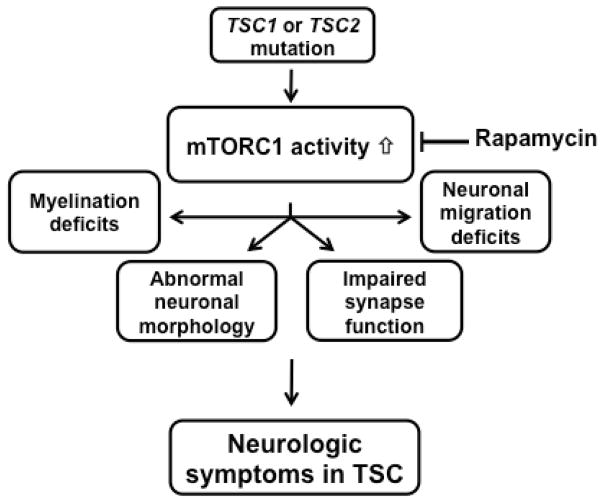Figure 2.
Proposed model of TSC pathomechanism in the brain. Mutation of either TSC1 or TSC2 disrupts the inhibitory function of the TSC1/2 complex. This leads to constitutively increased mTORC1 activity, which in turn results in abnormal neuronal connectivity, characterized by abnormal neuronal morphology and migration, abnormal white matter and impaired synapse function.

